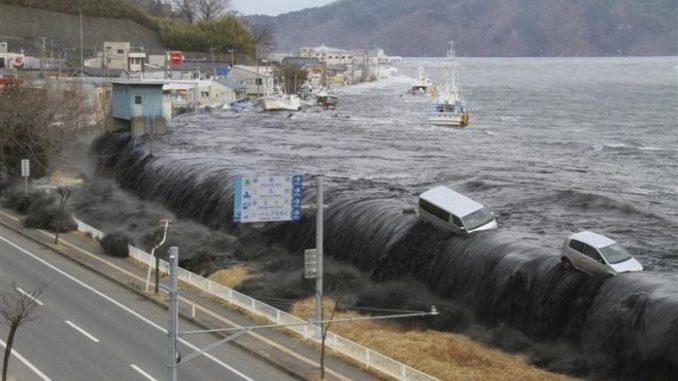Earthquake of large magnitude leaves the city in pieces…

On Wednesday night, a powerful 8.2 magnitude earthquake struck the Alaskan Peninsula, making it one of the strongest earthquakes recorded in the region in decades. The quake, measured at a depth of 35 kilometers (21.7 miles), was located approximately 91 kilometers (56 miles) east-southeast of Perryville, Alaska, according to the U.S. Geological Survey (USGS).
The tremor triggered widespread tsunami warnings and advisories across coastal Alaska, prompting sirens, evacuation protocols, and a heightened state of readiness across the Pacific. Although no immediate reports of significant damage or casualties were confirmed, the event underscored the vulnerability of earthquake-prone regions along the Pacific Ring of Fire.
Where and When the Earthquake Struck
The USGS reported that the earthquake occurred at approximately 10:15 p.m. local time. Its epicenter was in the remote waters off the southern coast of Alaska, near Perryville, a small fishing community with fewer than 100 residents.
Alaska sits on the Pacific Ring of Fire, a highly active seismic zone where tectonic plates collide. The region frequently experiences earthquakes, but events exceeding magnitude 8.0 are rare. This quake was classified as a megathrust earthquake, typically caused when the Pacific Plate is forced beneath the North American Plate along a subduction zone.

Tsunami Warnings and Evacuations
The National Tsunami Warning Center (NTWC) quickly issued a tsunami warning for parts of southern Alaska, extending from Hinchinbrook Entrance (near Prince William Sound) to Unimak Pass.
Videos shared by local authorities and media showed tsunami sirens sounding in towns such as Kodiak, urging residents to move to higher ground. Shelters were opened in several coastal communities, and residents were advised to stay alert until official all-clear messages were issued.
In addition to U.S. agencies, the Pacific Tsunami Warning Center (PTWC) monitored the event for potential impacts on other Pacific territories, including Hawaii and Guam. Both were later cleared, with officials confirming no tsunami threat to those areas.
International agencies in Japan, New Zealand, and other Pacific nations also conducted rapid assessments, though no major alerts were issued outside of Alaska.

Aftershocks Reported
Following the initial quake, the USGS recorded at least eight aftershocks, with two exceeding magnitude 6.0. Aftershocks are common following earthquakes of this size, as tectonic plates continue to adjust after the release of stress.
Emergency authorities advised residents to remain cautious, as aftershocks can cause additional ground shaking and potential hazards, especially for unstable structures or areas prone to landslides.
Historical Context: Alaska’s Seismic Risk
Alaska is the most seismically active state in the U.S., accounting for a large share of the nation’s strongest earthquakes. According to the Alaska Earthquake Center, the state records tens of thousands of earthquakes each year, though most are too small to cause damage.
The 1964 Great Alaska Earthquake, at magnitude 9.2, remains the most powerful recorded earthquake in U.S. history and the second most powerful globally. That event triggered devastating tsunamis that reached as far as California and Hawaii.
While Wednesday’s 8.2 magnitude quake was not as destructive, it serves as a reminder of the region’s seismic vulnerability and the importance of preparedness.

Global Monitoring and Scientific Assessments
Seismologists worldwide monitored the earthquake closely. The USGS ShakeMap indicated strong shaking in sparsely populated areas, reducing the risk of widespread structural damage. Still, scientists emphasized the importance of ongoing observation, particularly in coastal zones vulnerable to tsunamis.
The Pacific Tsunami Warning Center and international partners used real-time ocean sensors to assess wave activity. Fortunately, while small tsunami waves were observed, no significant flooding was reported.
Japan, New Zealand, and other Pacific nations maintained elevated alert levels until seismic and ocean data confirmed no broader Pacific-wide tsunami risk.

Moving Forward
The earthquake on the Alaskan Peninsula highlights the critical need for continued investment in seismic monitoring, infrastructure resilience, and community preparedness. While this event did not result in widespread destruction, history shows that Alaska and other Pacific Rim regions remain at risk for future large-scale earthquakes and tsunamis.
By combining scientific research, government coordination, and community education, officials hope to reduce the human and economic toll of future disasters.